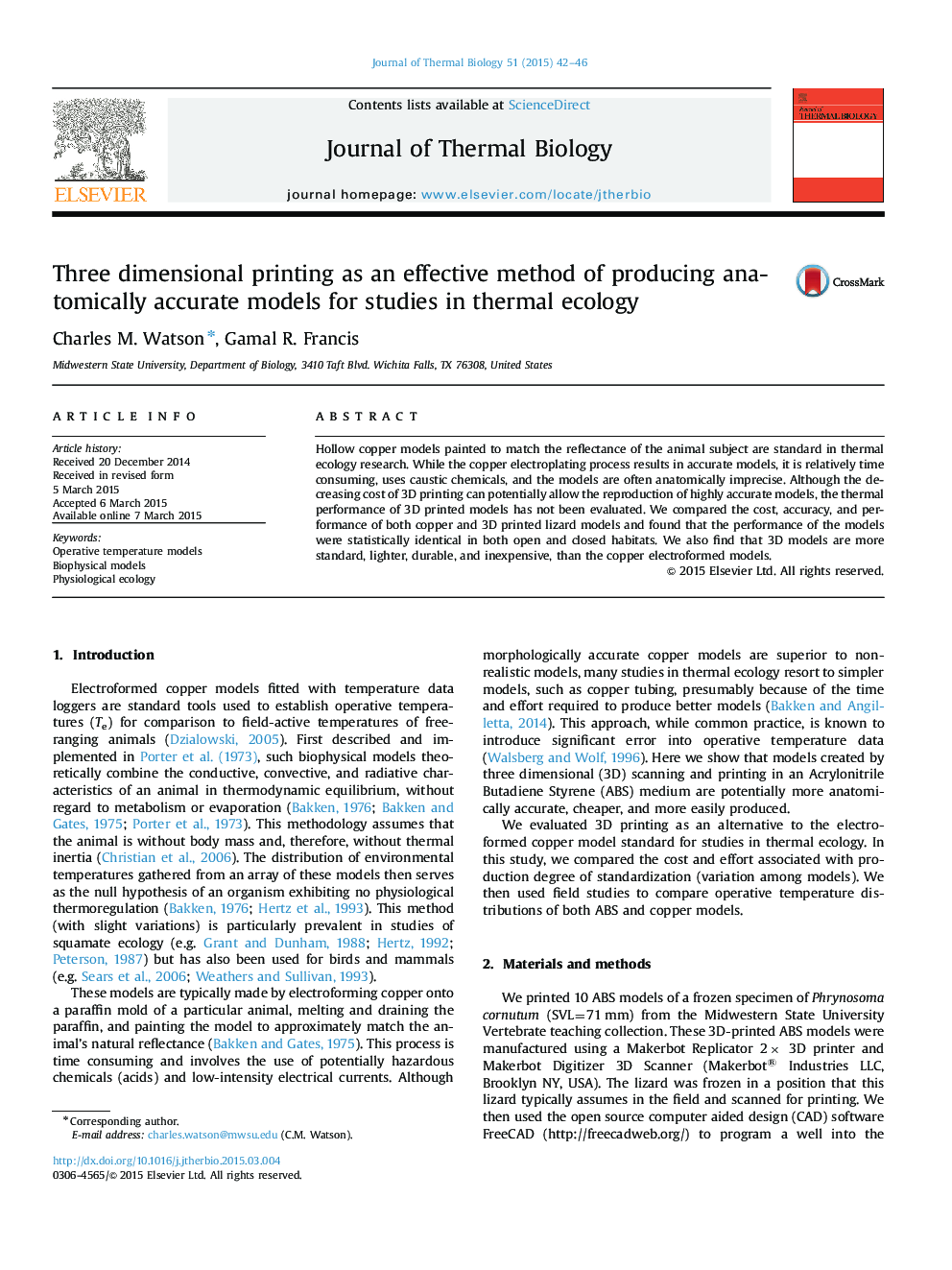| Article ID | Journal | Published Year | Pages | File Type |
|---|---|---|---|---|
| 2842802 | Journal of Thermal Biology | 2015 | 5 Pages |
•Compared use of 3D printed acrylonitrile butadiene styrene and electroformed copper models in thermal ecology.•Data recorded using both models are functionally identical.•Printed models are lighter, more uniform and durable, and files can be digitally distributed.•Electroforming process initially cheaper while 3D printing is cheaper after initial investment.•Many measurable benefits of 3D printed acrylonitrile butadiene styrene models over electroformed copper models.
Hollow copper models painted to match the reflectance of the animal subject are standard in thermal ecology research. While the copper electroplating process results in accurate models, it is relatively time consuming, uses caustic chemicals, and the models are often anatomically imprecise. Although the decreasing cost of 3D printing can potentially allow the reproduction of highly accurate models, the thermal performance of 3D printed models has not been evaluated. We compared the cost, accuracy, and performance of both copper and 3D printed lizard models and found that the performance of the models were statistically identical in both open and closed habitats. We also find that 3D models are more standard, lighter, durable, and inexpensive, than the copper electroformed models.
